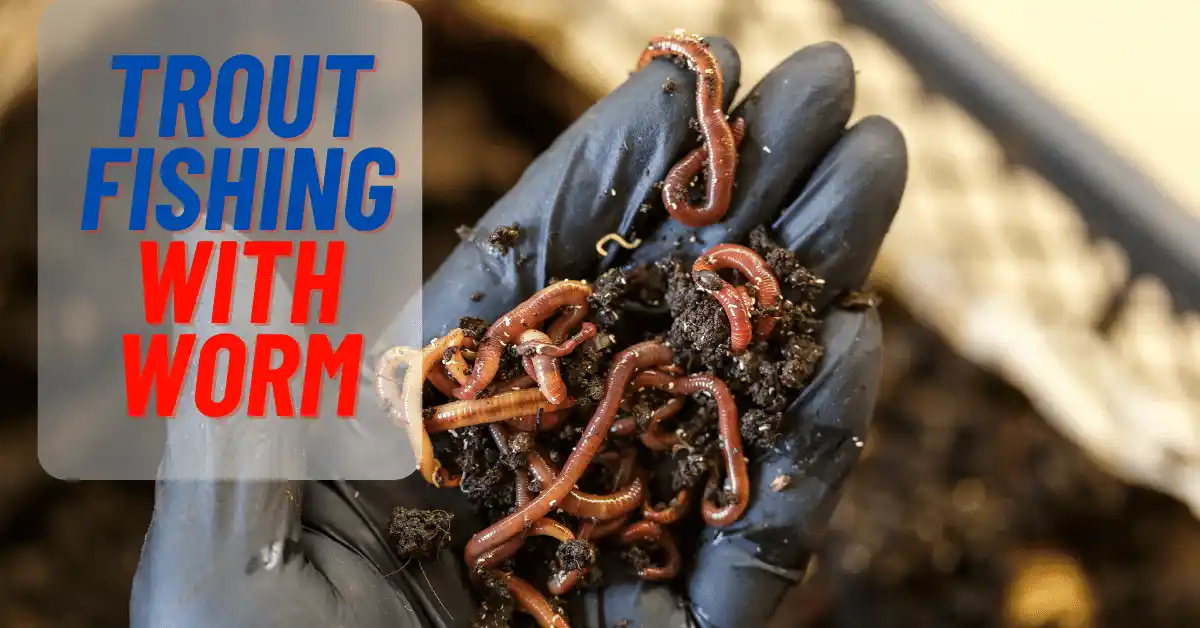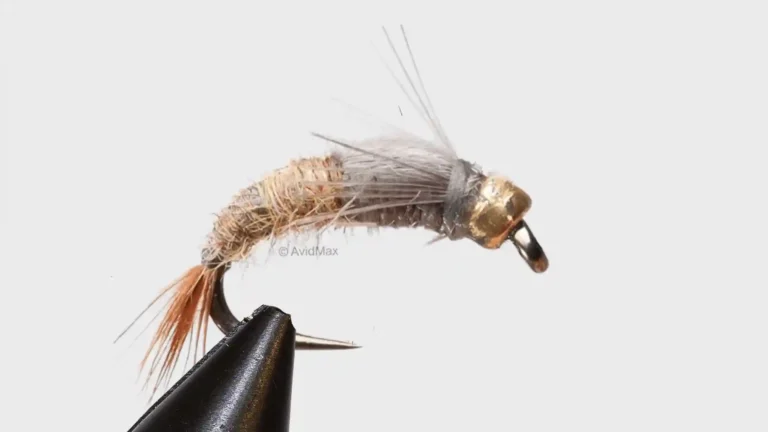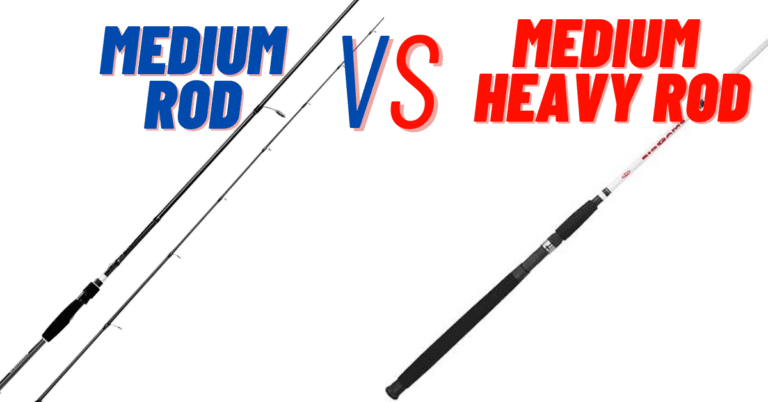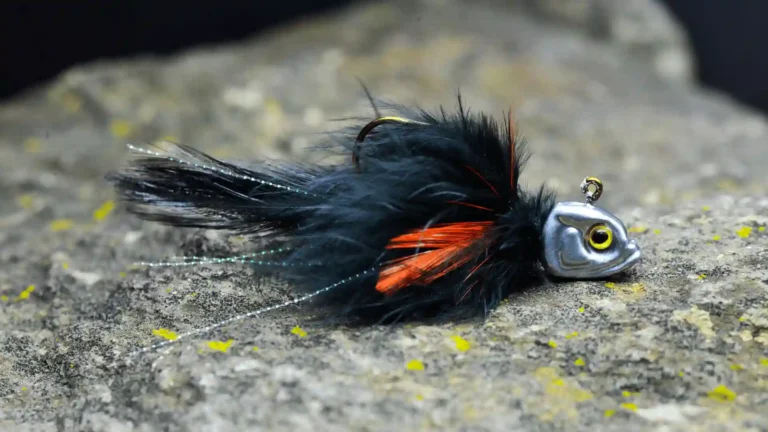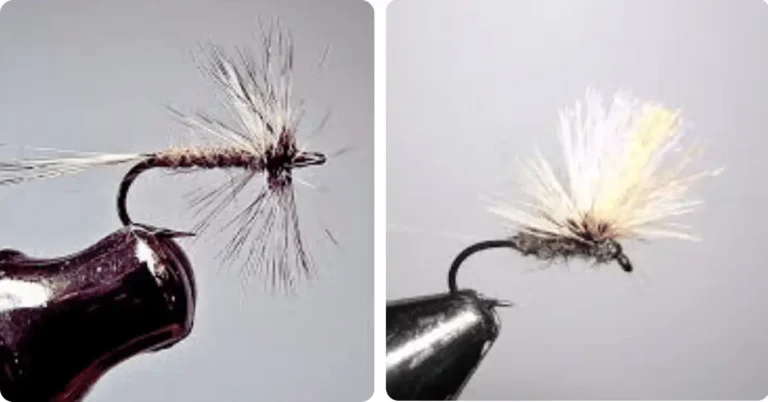Trout Fishing With Worms: 6 Best Worms and Winning Tips
Trout Fishing With Worms: 6 Best Worms and Winning Tips
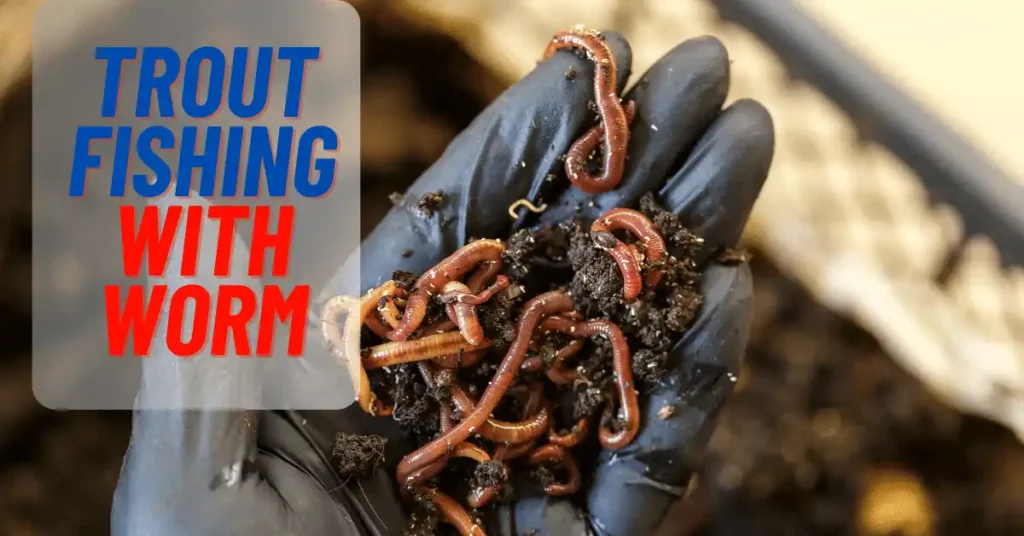
Did you know that using worms to catch trout is a really good way to fish? It might be surprising, but it works well. Whether you’re a pro or just starting, it’s a fun way to go fishing.
Worms are good for fishing because they are easy to get and not expensive. Trout like the way they smell and move, so you have a better chance of catching fish. You can use worms in different ways when you fish.
We’ll explore different setups, and techniques for presenting your bait effectively, and even address common challenges you may encounter along the way.
So grab your gear and get ready to reel in some trophy-worthy trout! Let’s dive into the world of worm fishing for an unforgettable angling adventure.
Understanding Trout Behavior
Trout are fascinating creatures with unique behaviors that make them a popular target for anglers.
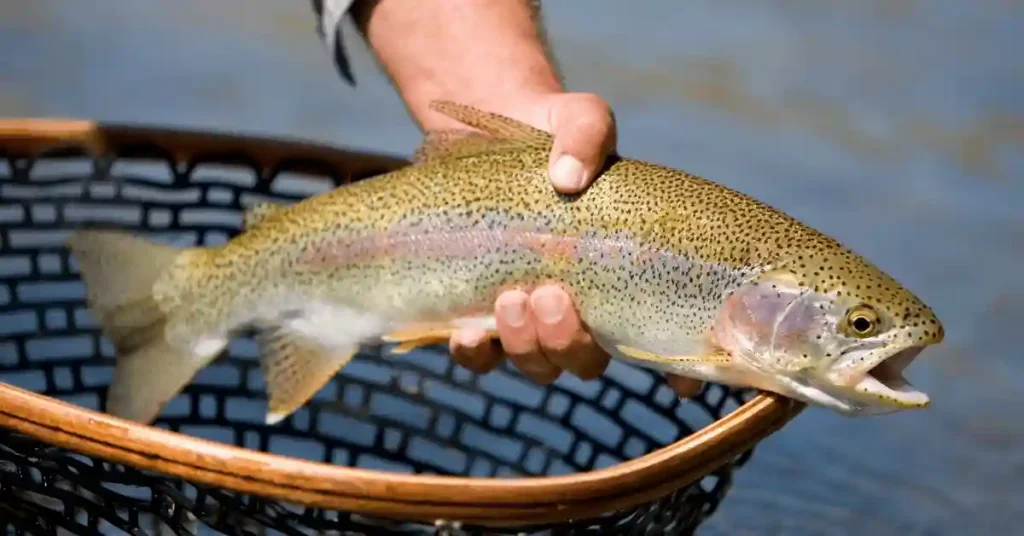
To increase your chances of success in trout fishing with worms, it’s essential to understand their behavior and what attracts them to worms.
Why Trout Like Worms
Trout have a natural affinity for worms, and there are several reasons why they find these wiggly creatures irresistible. Firstly, worms form a significant part of the trout’s diet in their natural habitat.
As opportunistic feeders, trout will readily consume worms when they come across them in the water.
Worms provide essential nutrients for trout. These slimy critters are packed with proteins and other vital elements that contribute to the fish’s growth and overall health. Just like humans need a balanced diet, so do trout!
The movement of worms also triggers a trout’s predatory instincts. When a worm wriggles through the water, it mimics the movements of injured or distressed prey. This stimulates the trout’s hunting response as they perceive an easy meal swimming by.
Understanding why trout like worms is crucial because it allows you to exploit this knowledge when developing effective tactics for catching them.
Effective Tactics
To maximize your success in trout fishing with worms, employing effective tactics is key. Here are some strategies you can use:
Presenting Worms
When presenting your worm bait to entice trout, using a slow and steady retrieve is often best. This technique creates a natural presentation that closely resembles how live prey moves in the water.
Another important aspect is adjusting the position of your worm on your hook or rigging setup to mimic live prey more convincingly.
For example, threading the hook through multiple parts of the worm can create lifelike movements that attract hungry trout’s attention.
Experimenting with different depths until you find where trout are feeding can also be highly effective.
By varying your casting distance or using different weights, you can explore the various depths of the water column to locate where the trout are actively feeding.
Catching Techniques
Different fishing techniques can be employed depending on your fishing location and conditions. Here are three popular catching techniques for trout fishing with worms:
- Drift Fishing: This technique involves allowing your worm bait to flow naturally with the current. By casting upstream and letting it drift downstream, you imitate a helpless prey item that trout find hard to resist.
- Still Fishing: Still, fishing is a popular technique used by anglers to catch fish, including trout. It involves casting your bait into a specific spot and waiting patiently for the fish to bite. This method is often used in calm waters such as lakes, ponds, or slow-moving rivers.
To successfully still fish for trout, you will need the right equipment and a basic understanding of the technique.
6 Best worms For Trout Fishing
No1. Nightcrawlers
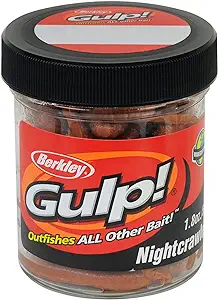
Nightcrawlers are like the superheroes of bait when it comes to trout fishing. They’re super big, which makes them super attractive to those big trout swimming around in the water.
You can easily find and buy nightcrawlers at bait shops or even online, so you don’t have to go on a wild goose chase just to get your hands on them.
And here’s the cool thing – nightcrawlers can be used in all sorts of fishing techniques! Whether you want to cast your line out far into the water or gently drop it right in front of those sneaky trout, nightcrawlers got your back.
But wait, there’s a catch (pun intended)! Nightcrawlers can be a bit pricey compared to other baits, so you might need to dig deeper into your pockets. And remember, these worms need to stay cool like a cucumber, so make sure you keep them in the fridge until you’re ready to use them.
No 2. Red Worms
Red worms are super cool for trout fishing! They are like the rockstars of bait because trout just can’t resist their natural color. It’s like they see those worms and think, “Yum, that’s my kind of snack!” And guess what?
Red worms are super easy to use. You don’t need a fancy degree in fishing or anything like that. All you have to do is grab one of those wriggly little guys and thread it onto your hook.
Easy peasy, right? Plus, red worms are pretty cheap, so you won’t have to break the bank to get them. And the best part?
You can find them pretty much anywhere! Just head on down to your local bait shop or even dig them up in your own backyard. But here’s the thing, red worms might be small, which means they could attract smaller trout.
So if you’re looking to catch a big ol’ monster trout, you might want to consider using a different kind of worm. Oh, and one more thing – red worms aren’t the toughest worms out there.
So if you’re planning on doing some serious fishing and want your bait to last a long time, you might want to try out some other worm options.
No 3. Mealworms
Mealworms have a high protein content that attracts hungry trout. They can be used as live or artificial bait, providing versatility for anglers. Mealworms are also easy to store and transport.
However, they require careful handling to prevent damage, and using them in large quantities can be expensive.
No 4. Waxworms
Waxworms are like the perfect snack for trout! They’re super soft, which means trout can gobble them up without any trouble.
You can use waxworms whether you’re fishing in cold water or warm water, so they’re great for all kinds of fishing adventures. And get this, they can last a long time if you keep them in the fridge!
That means you can stock up on waxworms and have plenty of bait for your fishing trips.
But here’s the thing, waxworms can be a little tricky to put on your hook. They’re kind of fragile, so you have to be careful when you’re trying to thread them on. Also, depending on where you live, it might not be easy to find waxworms.
Some places just don’t have them available all the time. So if you do come across some waxworms, make sure to take good care of them because they’re a special treat for trout!
No 5. Earthworms
So, when it comes to catching trout, using worms is like the OG move. These slimy creatures have this special smell and wiggly motion that just drives trout crazy.
You can find them almost anywhere outside, so you don’t have to go on some wild goose chase to get your hands on them. Plus, they don’t cost a fortune, so you won’t be breaking the bank just to catch some fish.
But here’s the thing, these worms aren’t picky eaters. They’ll attract all sorts of fish, even the little ones that you might not be interested in. And let’s not forget about the mess!
Using worms means you’ll have to keep putting new ones on your hook because they tend to fall off easily. So, if you’re up for a bit of a challenge and don’t mind getting your hands dirty, then go ahead and give worms a try for trout fishing!
No 6. Butterworms
Butterworms are like the superstars of bait when it comes to trout fishing with worms! These little critters have this amazing smell that trout just can’t resist. It’s like they have their own secret perfume that drives the fish wild!
And let me tell you, trout have a super sense of smell, so if they catch a whiff of these butterworms, they’ll come swimming from miles away just to get a taste! It’s like a fishy version of a delicious dinner bell ringing underwater.
And the best part is, these worms are so soft and squishy that trout find them absolutely irresistible.
It’s like offering them a gourmet meal on a silver platter! They just can’t resist taking a bite. So if you want to catch some trout, make sure to grab yourself some butterworms and get ready for an epic fishing adventure!
| Worm Type | Pros | Cons |
| Nightcrawlers | – Large size attracts big trout – Easy to find and purchase – Versatile and can be used in various fishing techniques | – Can be expensive – Require refrigeration to keep them fresh |
| Red Worms | – Natural color appeals to trout – Easy to handle and thread onto hooks – Affordable and readily available | – Smaller size may attract smaller trout – Not as durable as other worm types |
| Mealworms | – High protein content attracts hungry trout – Can be used as live or artificial bait – Easy to store and transport | – Require careful handling to prevent damage – Can be expensive if used in large quantities |
| Waxworms | – Soft texture makes them easy for trout to swallow – Can be used in both cold and warm water – Long shelf life when refrigerated | – Fragile and can be difficult to thread onto hooks – Limited availability in some areas |
| Earthworms | – Natural scent and movement entices trout – Can be found in most outdoor environments – Affordable and easy to collect | – May attract smaller fish species as well – Can be messy and require re-baiting frequently |
| Butterworms | – Strong scent attracts trout from a distance – Soft texture makes them irresistible to trout – Can be used in both freshwater and saltwater | – Limited availability in some areas – More expensive than |
Choosing the Right Bait
Selecting Worms
Selecting the right bait is crucial. One important consideration when choosing worms for trout fishing is size. You want to match the worm size to the species of trout you are targeting.
For larger trout, using bigger worms can be more effective, while smaller worms are better suited for pan-sized fish.
If you have large worms but want them to be more manageable on the hook, you can cut them into smaller pieces. This allows you to present a portion of the worm as bait without dealing with its full length.
Preparing Your Worms
Catching Worms
Catching worms is an important step in preparing for trout fishing with worms. After a rain, you can find worms near areas with moist soil. Look for them in your garden or near flower beds where the ground is damp.
You can also try searching under rocks or logs, as worms like to hide in these cool and dark places.
If you’re having trouble finding worms during the day, you can go on a worm hunt at night using a flashlight. The light will make it easier to spot the slimy creatures as they come out of their burrows. Just be careful not to disturb your neighbors while you search!
Once you’ve collected your worms, it’s essential to store them properly so that they stay alive and healthy until your fishing trip. Find a container with cool and moist soil – this will help keep the worms comfortable and prevent them from drying out.
Rigging Techniques
How to Put a Worm on a Hook
The way you rig your bait can greatly impact your chances of success. One popular method is threading the worm onto the hook.
This involves carefully pushing the point of the hook into one end of the worm and then sliding it up until only a small portion remains exposed. By hiding as much of the worm as possible, you create a more natural presentation that trout find enticing.
However, it’s important to leave some parts of the worm dangling off the hook. These dangling sections create movement in the water, mimicking live prey and attracting trout even more effectively.
By finding a balance between hiding and exposing parts of your worm, you can increase your chances of getting bites.
To ensure that your hook is not overloaded with too much bait, use just enough worm to cover its entirety without overwhelming it. Overloading can make it difficult for fish to bite or result in missed opportunities when setting hooks.
Knots and Setups
Securing your hooks properly is crucial for successful trout fishing with worms. One commonly used knot for this purpose is called a clinch knot. To tie this knot, pass about six inches of line through the eyelet of your hook and then double back over itself before making five or six turns around both lines above where they overlap near the eyelet.
Finally, thread the loose end through that small loop formed above where you made those wraps before moistening everything with saliva or water and pulling tight.
Another important aspect when rigging for trout fishing with worms is selecting appropriate setups based on how trout are feeding and where they are located about water depth.
For bottom-feeding trout, using a slip sinker setup works well. This setup involves placing an egg-shaped sinker on your mainline above a barrel swivel followed by tying another section of line with the hook attached to the opposite end of the barrel swivel.
The slip sinker allows your bait to move freely along the bottom, making it more enticing for trout.
When fishing in areas where trout are feeding closer to the surface, using a float or bobber can be effective.
Adjusting the height of your float according to water depth and where trout are actively feeding will help you present your worm at an optimal level. This setup allows you to suspend your bait at a specific depth, increasing its visibility and attractiveness to hungry trout.
Fishing Strategies
Trout fishing with worms requires some effective strategies to increase your chances of success. By understanding the best times for trout fishing and how to read water bodies, you can optimize your fishing experience.
Best Times for Trout Fishing
Timing is crucial. The best times to catch trout are usually early in the morning and late in the evening. During these hours, trout are more active as they search for food. The cooler temperatures during these times also make them more comfortable.
On overcast days, you have an advantage as well. Cloud cover reduces the amount of light penetrating the water, making trout feel less exposed and cautious. This means that even during daylight hours on overcast days, you can still find good opportunities for catching trout.
Another important factor to consider is the season. Spring and fall tend to be ideal seasons for trout fishing due to their cooler water temperatures. As temperatures rise in summer or drop too low in winter, trout become less active and may be harder to catch.
Tips and Tricks
Weather Conditions
Understanding how weather conditions affect fishing success is important. Trout tend to feed more aggressively when the sky is overcast because they feel safer.
Changes in barometric pressure can also impact their feeding behavior. When the pressure is lower, like before a storm, trout are more active and likely to bite.
Wind is another factor to consider. A moderate breeze stirs up insects and baitfish, attracting hungry trout. Last summer, I went trout fishing on a cloudy day with light rain showers.
Once the clouds covered the sky, I noticed more frequent bites from hungry trout.
Adjusting Techniques
When fishing for trout with worms, it’s important to consider the weather and adjust your techniques accordingly. Experienced anglers use different methods like still fishing, drifting, and jigging to attract bites from various types of fish in different areas of the water.
Finding the right presentation speed and depth is also crucial for consistent success. This may vary throughout the day depending on the trout’s feeding patterns. If you’re not having any luck in one spot, don’t be afraid to try a different location.
Being flexible and exploring new areas increases your chances of finding a place where the trout are actively biting.
Reviews of Worm Types
Nightcrawlers vs. Red Worms
Two popular choices are nightcrawlers and red worms. Each type has its advantages depending on the target species and water conditions.
Nightcrawlers are larger compared to red worms, making them a better option for targeting larger trout. Their substantial size provides an enticing meal for bigger fish, increasing your chances of success.
On the other hand, red worms are smaller and more delicate, which makes them ideal for attracting smaller trout or other species that prefer bite-sized meals.
The choice between nightcrawlers and red worms also depends on the clarity of the water you’ll be fishing in. In clearer waters where subtlety is key, red worms can be highly effective due to their small size and natural appearance.
They blend in seamlessly with their surroundings, making it easier to fool wary trout into taking a bite.
However, if you find yourself fishing in murkier conditions where visibility is limited, nightcrawlers have an advantage thanks to their strong scent trails that can help attract fish from greater distances.
To determine which type of worm will work best for your specific situation, consider both the size preference of your target species and prevailing water clarity.
If you’re targeting larger trout or fishing in murky waters, opt for nightcrawlers as they provide a substantial meal with enhanced scent dispersion capabilities.
On the other hand, if you’re after smaller trout or fishing in clear waters that require finesse and stealthiness, choose red worms as they offer a more subtle presentation.
Mealworms and Wax Worms
Apart from nightcrawlers and red worms, two additional types of bait can be used when traditional earthworms aren’t producing the desired results: mealworms and wax worms.
Mealworms are known for their durability, making them an excellent choice when you need to cast your line further distances without worrying about losing your bait.
They hold up well on the hook and can withstand the force of long-distance casting, allowing you to cover more water and increase your chances of attracting trout.
On the other hand, wax worms have a high-fat content that makes them particularly enticing to trout in colder water conditions. As temperatures drop, fish become less active and seek out high-energy food sources.
Advanced Tactics
Seasonal Strategies
Adjust your tactics based on the season. In spring, trout are aggressive after spawning. Use bigger worms to get their attention and make them strike. In summer, when water is low and clear, be subtle.
Use smaller worms to imitate natural prey. In fall, trout are preparing for winter by eating a lot. Use bright or scented worms to stand out in the water and attract hungry trout. Remember to consider environmental factors that could affect your success in each season.
Environmental Factors
Before going trout fishing with live bait, check local rules about using live bait like worms. Some places have specific rules about bait or don’t allow live bait. Also, catch-and-release is important for fish populations.
Use barbless hooks with live bait to make releasing fish easier and safer. Lastly, don’t throw unused worms into the water. They could introduce harmful species that mess up the environment.
Final Words
Trout fishing with worms is a great way to catch fish. You just need to know how trout behave and use the right bait. Whether you use live worms or prepare them properly, these techniques can help you catch more trout.
I’ve given you lots of tips and tricks to help you get better at worm fishing. Try different ways of rigging your line and different strategies. With practice, you’ll catch more trout.
Now it’s time for you to go fishing. Use these techniques and see how well they work. Grab your gear, bring some fresh worms, and have fun catching trout.
Frequently Asked Questions
How can I understand trout behavior when fishing with worms?
Trout behavior can vary depending on factors like water temperature and time of day. Observing their feeding patterns, hiding spots, and preferred depths will give you insights into their behavior. Experiment with different techniques to see what works best in your specific fishing location.
What are the types of live worms that work well for trout fishing?
Nightcrawlers, red wigglers, and mealworms are popular choices for trout fishing. Nightcrawlers have a larger size that appeals to bigger trout, while red wigglers are smaller but highly effective. Mealworms provide a unique scent that can attract trout in certain conditions.
How do I choose the right bait for trout fishing with worms?
Consider the size of the bait relative to the target fish species. Larger baits like nightcrawlers work well for bigger trout, while smaller baits like red wigglers or mealworms are suitable for smaller fish or when targeting selective feeders. Experimentation is key to finding what works best in your area.
What steps should I follow to prepare my worms before going trout fishing?
To prepare your worms, ensure they’re lively by keeping them cool and moist before use. Avoid exposing them to direct sunlight or extreme temperatures as it may harm their vitality. Rinse off excess dirt from the worms gently using clean water if necessary.
What rigging techniques should I consider when using worms for trout fishing?
For worm rigging techniques, options include using single hooks (such as a bait holder hook), treble hooks, or even jig heads depending on personal preference and local regulations. Experiment with different setups such as Carolina rigs or drop shot rigs until you find one that suits your style of angling.
Do you have any tips and tricks for successful worm-based trout fishing?
When using worms for trout fishing:
- Use a light line for better sensitivity.
- Thread the worm onto the hook in a natural manner.
- Try using scented attractants or bait enhancers to increase effectiveness.
- Vary your retrieval speed and depth to find what triggers bites.
- Pay attention to weather conditions and adjust your approach accordingly.
What advanced tactics can I employ when trout fishing with worms?
Advanced tactics for trout fishing with worms may include techniques like drift fishing, float fishing, or even fly fishing. These methods require more skill and experience but can yield great results.

Meet Ibrahim Khan, an avid angler and author in Fishing Teach. He shares his wealth of knowledge from his 16 years of experiences in fishing. His articles are a captivating blend of practical insights and thrilling tales that invite readers into the enchanting world of fishing.
Ibrahim’s guides are your go-to guide in the realm of fishing on this informational site. Hailing from a coastal paradise, Ibrahim’s passion for angling is the heartbeat of his life.

